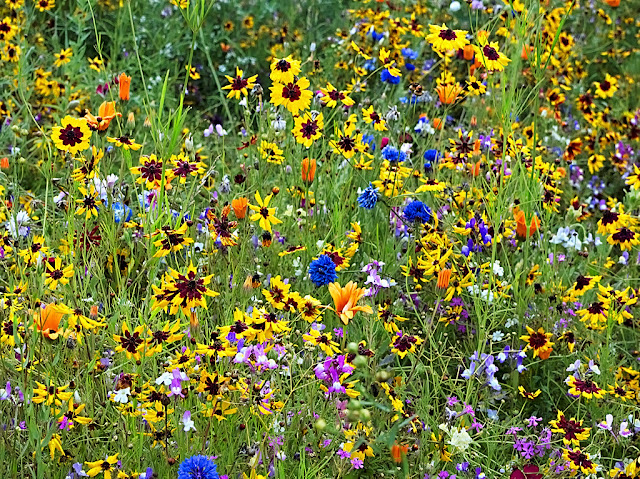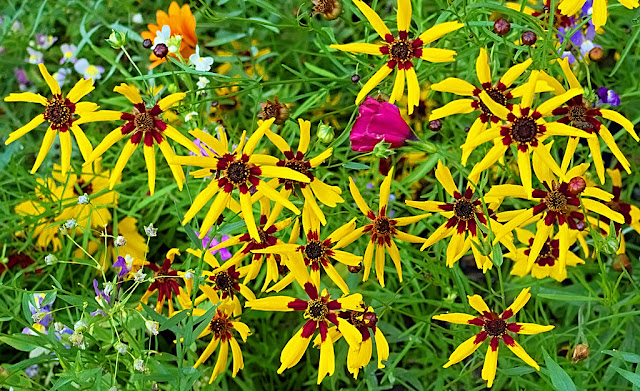 |
| 9 July 2017 |
I talk about the garden reaching its peak in July, but in reality, it is more of a ridge than a peak. As these pictures show, by the beginning of July, the beds were very colourful, but predominantly white, with individual highlights of blue and purple.
 |
| 9 July 2017 |
As the month progressed, the density of the flowers increased and more pink and red appeared in the mix.
 |
| 16 July 2017 |
With a number of bright red poppies:
 |
| 16 July 2017 |
Finally, by the beginning of August, the bed becomes predominantly yellow with barely any white blossom at all:
 |
| 6 August 2017 |
 |
| 6 August 2017 |
After that, the display steadily declined as the flowers faded and died.
Next: October Colours




